This magnificent centerpiece, crafted in the style of the renowned French bronzier Pierre-Philippe Thomire (1751–1843), dates from the Charles X period (1824–1830) and exemplifies the refined Neoclassical aesthetic characteristic of the era.
The piece rests on a circular base of gilt and patinated bronze, richly adorned with symmetrical acanthus leaves, laurel wreaths, and a central medallion featuring a classical mask motif. The base is elevated by four elegantly designed feet, adding a sense of grandeur and lightness to the composition.
Supporting the upper crystal bowl are three female caryatids, dressed in classically inspired drapery. Rendered in dark patinated bronze, these figures stand in a dignified posture with arms crossed, reminiscent of ancient Greek architectural caryatids used as structural supports. Their finely sculpted details and graceful proportions reflect the influence of Thomire’s masterful bronze craftsmanship.
Atop the structure sits a cut crystal bowl, whose intricate faceting enhances its brilliance and transparency. The rim is embellished with gilt bronze acanthus leaves, seamlessly integrating the luminosity of the crystal with the richness of the gilded bronze elements below.
This centerpiece is not merely a functional object but a statement of luxury and refinement, emblematic of French decorative arts under King Charles X. The combination of gilt bronze, patinated bronze, and crystal, along with its classical iconography, makes it an exceptional work in the style of Thomire, one of the most celebrated bronziers and decorative artists of his time.





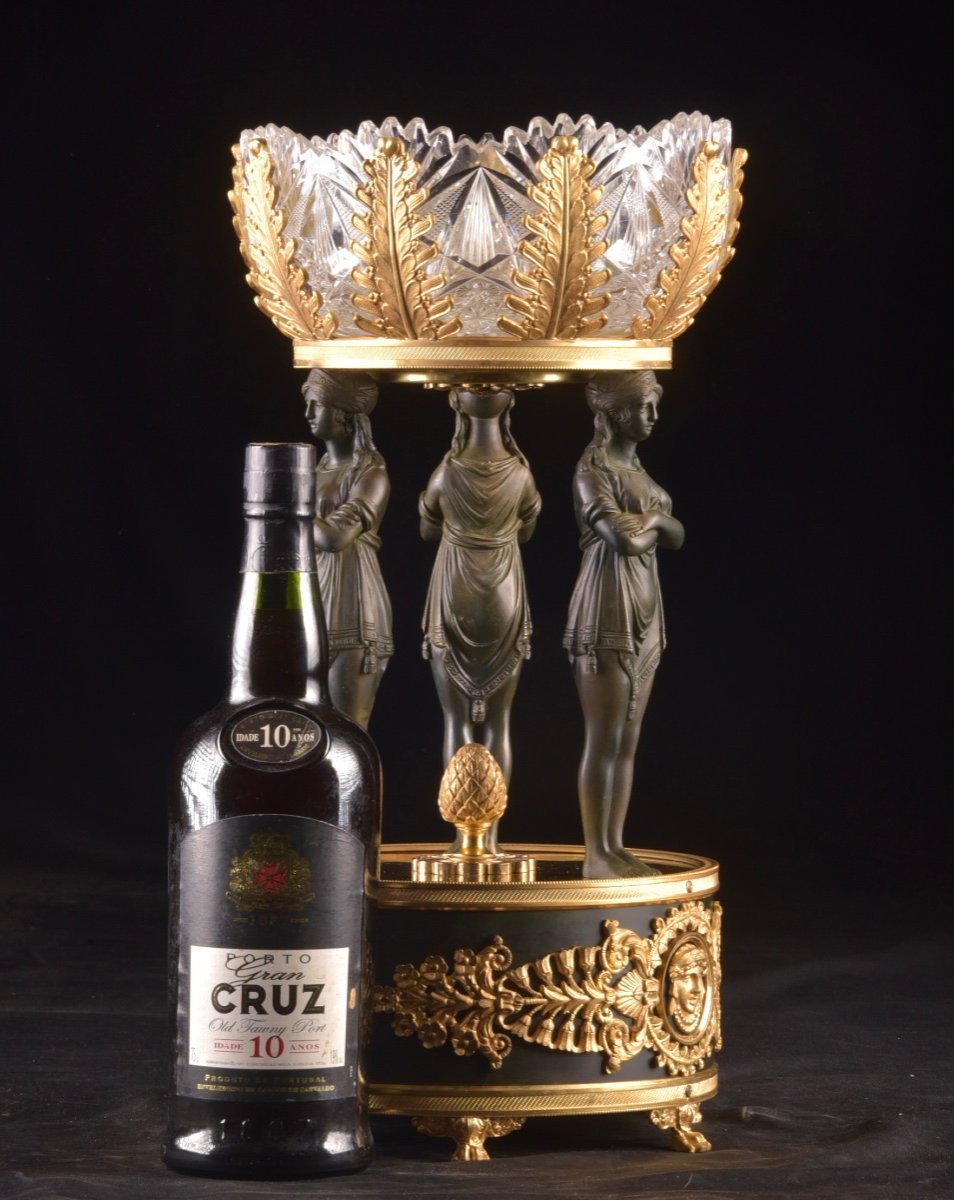

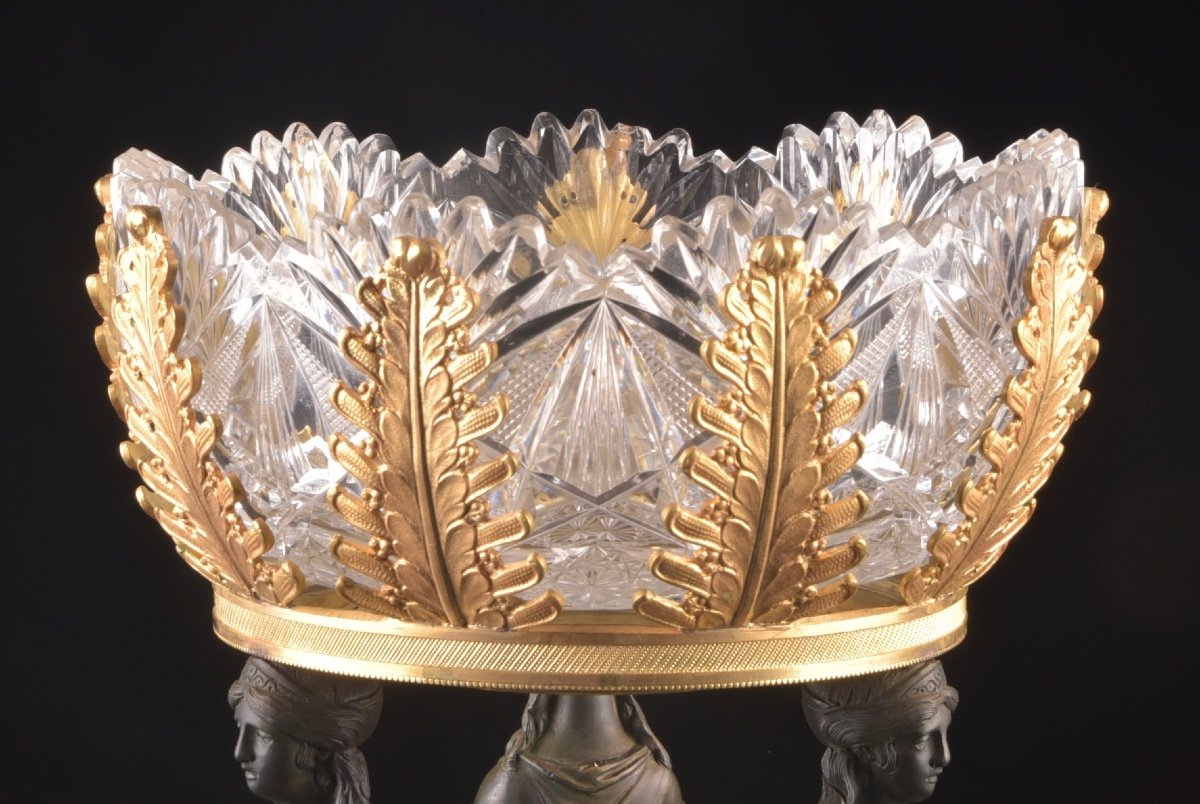

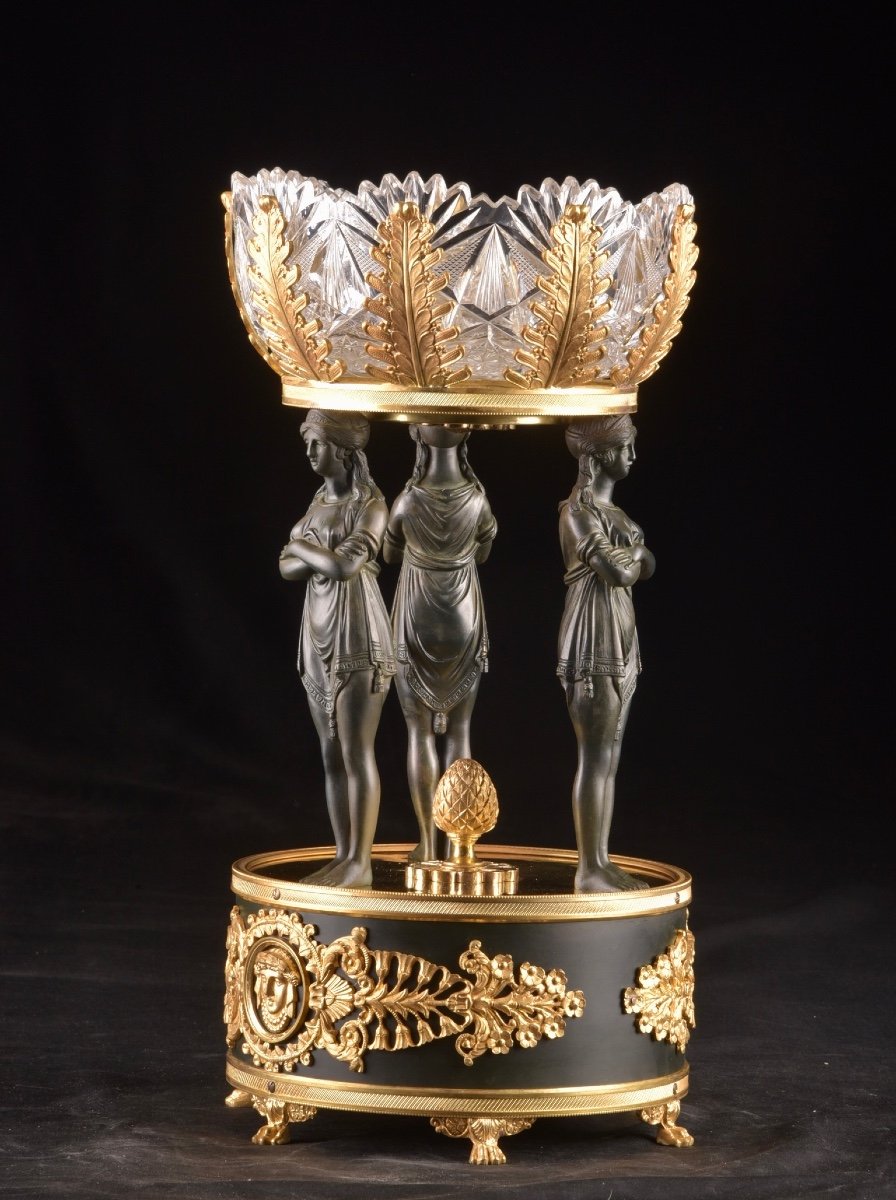
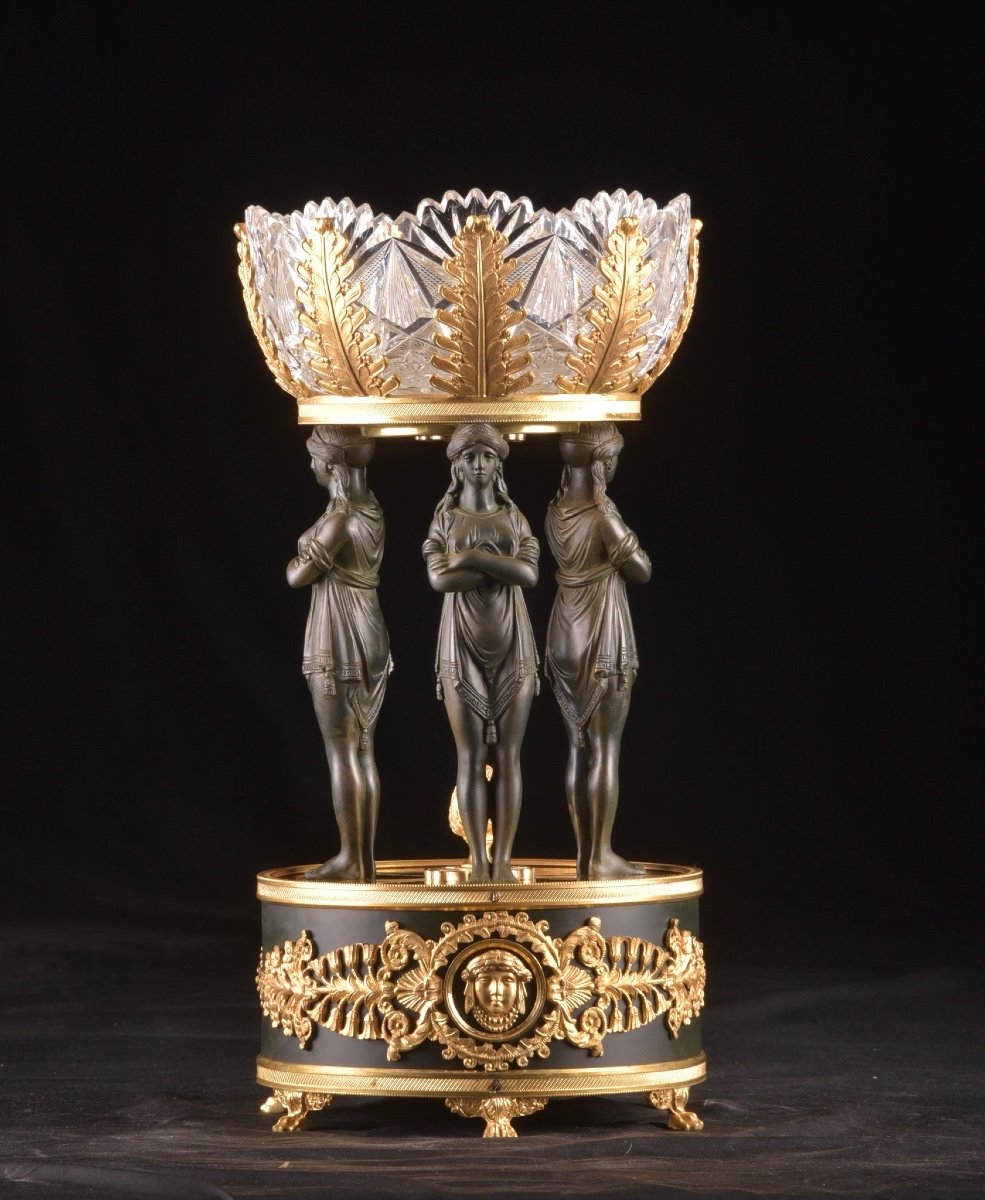

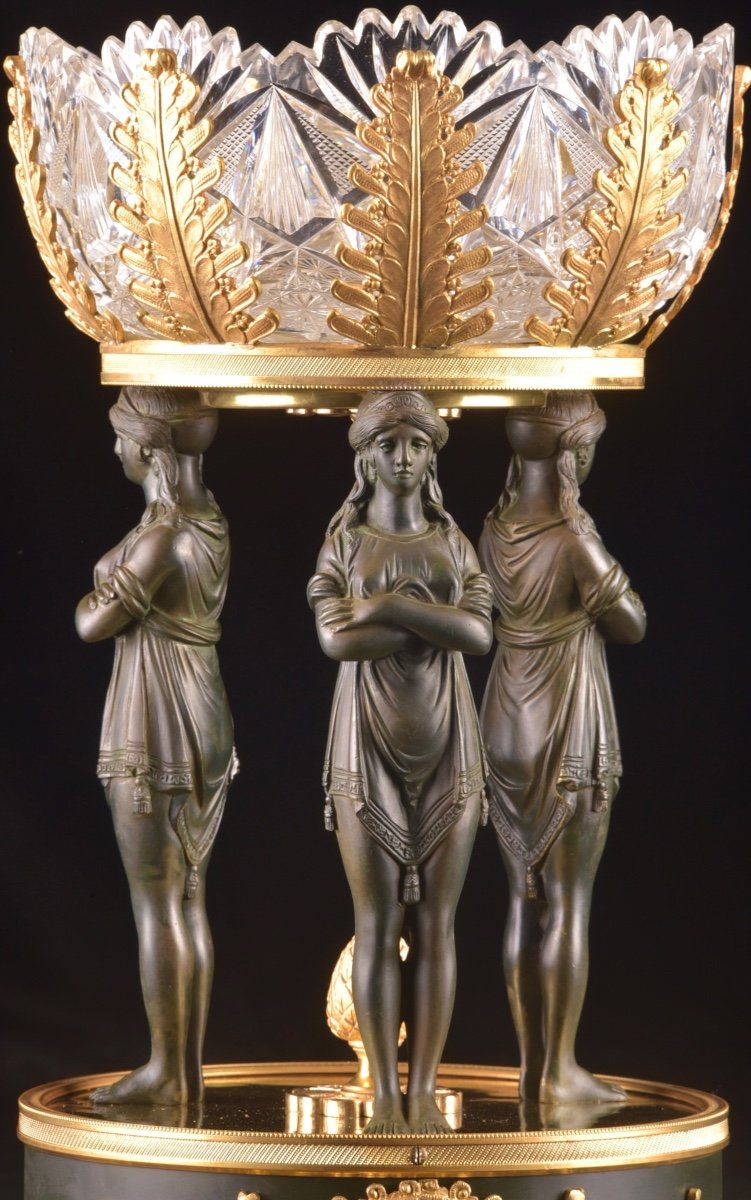
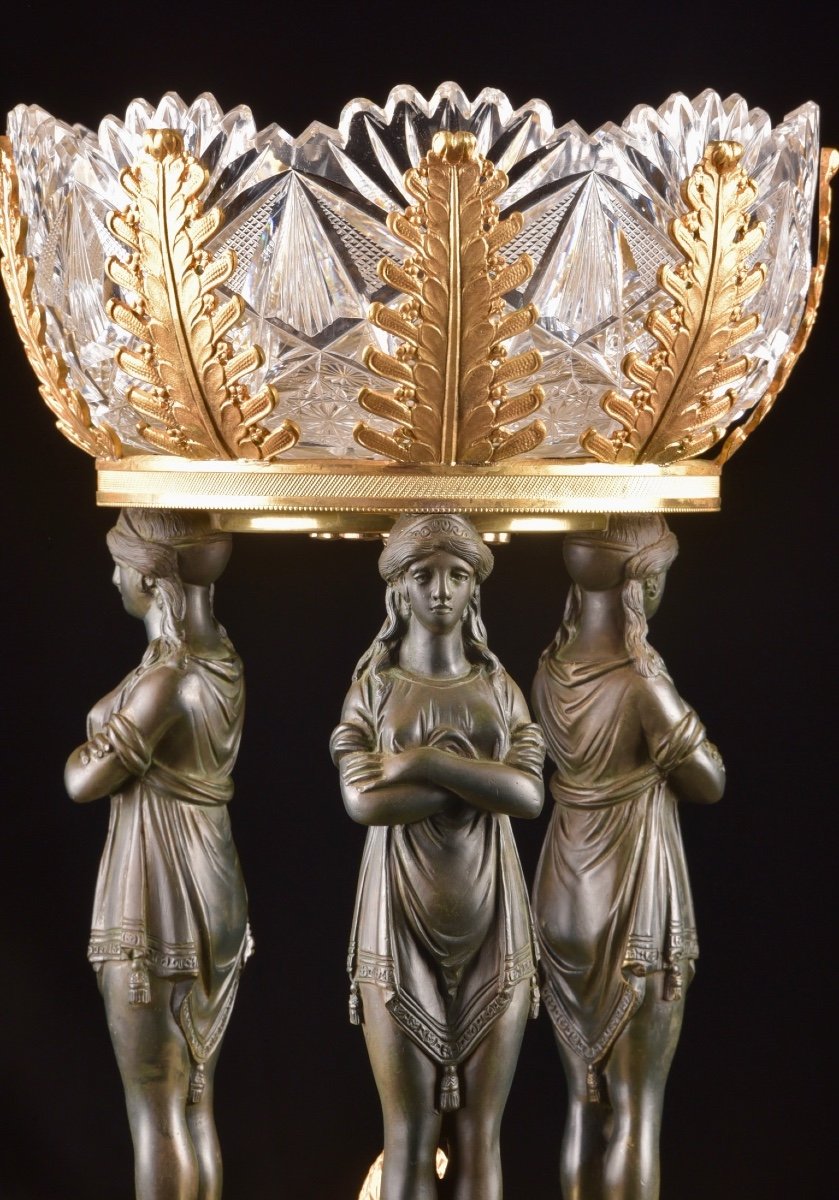
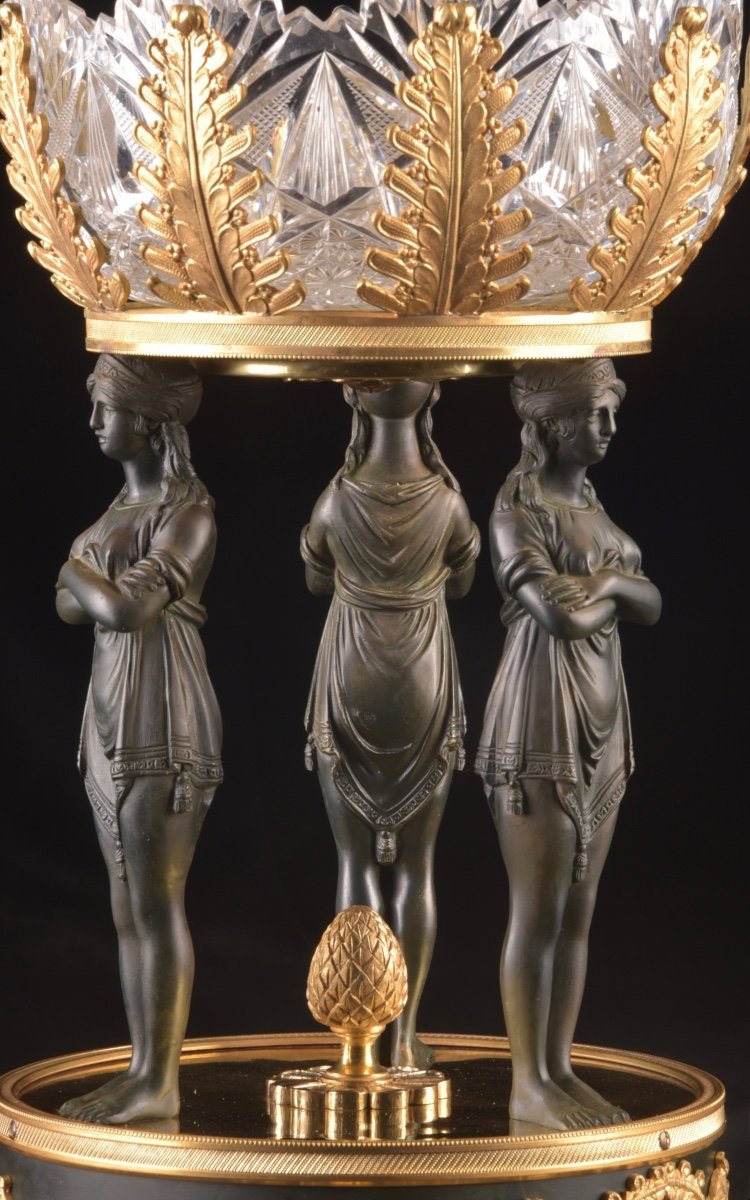




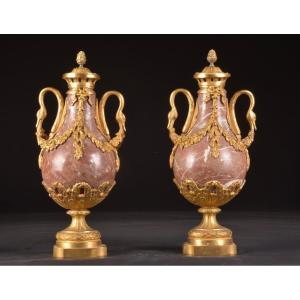









 Le Magazine de PROANTIC
Le Magazine de PROANTIC TRÉSORS Magazine
TRÉSORS Magazine Rivista Artiquariato
Rivista Artiquariato
